Greek Yogurt Panna Cotta With Poached Rhubarb
We’re pairing a creamy Greek yoghurt panna cotta with some lightly poached forced rhubarb. The tangy panna cotta & sweet rhubarb work perfectly together!
This post contains affiliate links.
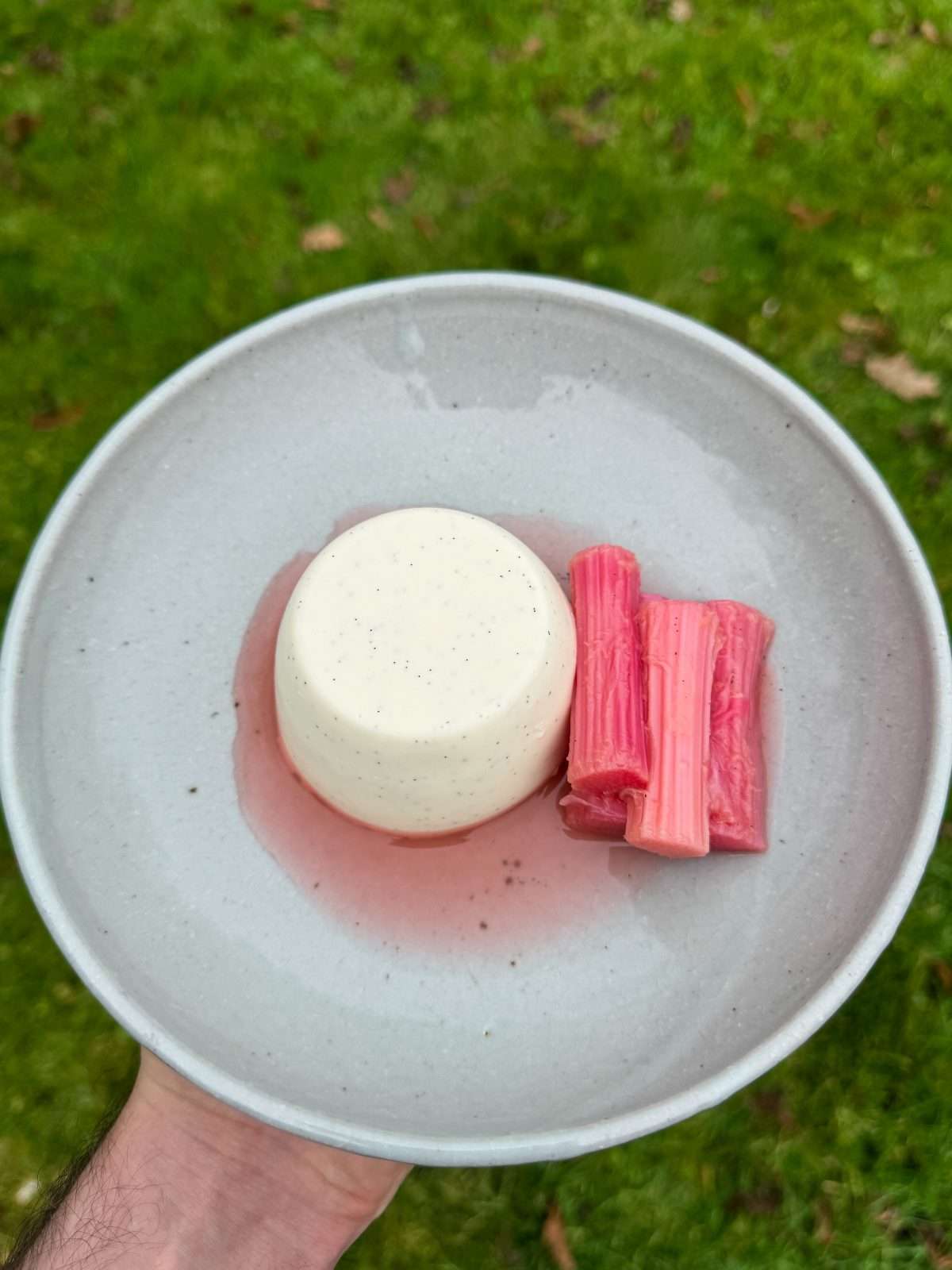
In this recipe, we’re making a classic vanilla panna cotta but we’re replacing some of the cream & milk with Greek yoghurt! These are still as creamy as a classic Italian panna cotta but have a subtle tangy flavour that works fantastically with poached or roasted fruit. They’re creamy, luxurious & have a perfect wobble.
We’re going to be serving our panna cottas with some seasonal, forced rhubarb. To keep this vibrant & tender, we’re going to be poaching it gently in an orange & vanilla poaching syrup. There’s some cinnamon & star anise thrown in there as well! Cooking rhubarb this way means that you end up with this flavourful, fruity syrup that can be served alongside the panna cotta & fruit.
If you’re looking for more pudding recipes to try then take a look at our ever growing collection of dessert recipes! There’s something for everyone here, from classic crumbles, sticky toffee pudding & treacle tart, to tiramisu & a whole load of homemade ice creams.
What You’ll Need
- Greek Yogurt – Make sure to use a full fat Greek yogurt, for the creamiest, tangiest panna cottas!
- Double Cream – Using double/heavy cream gives our panna cottas a creamy, melt in your mouth texture.
- Whole Milk – Replacing some of the double cream with whole milk makes our panna cottas lighter & less heavy. They’re just as creamy though!
- Vanilla – You’ll need a whole vanilla pod for this recipe. We’re using half for the panna cottas & half for the poached rhubarb. Alternatively, a good quality vanilla paste will work instead. I’d use a teaspoon of paste to replace half a vanilla pod.
- Sugar – We’re using caster sugar for both the rhubarb & panna cotta.
- Gelatine – For perfect, wobbly panna cottas, I use 3 sheets of gelatine to 600ml of liquid (including the yogurt). I developed this recipe using gelatine sheets, instead of powdered gelatine. I use Dr Oetker platinum grade gelatine sheets.
- Forced Rhubarb – If you want bright pink pieces of rhubarb, you’ll want to use forced rhubarb! This is in season from late December to March. Forced rhubarb is grown in darkness & has a sweet flavour & vibrant colour. If this isn’t in season, regular rhubarb will work as well.
- Orange – Rhubarb & orange work really well together, so we’re going to be adding zest & juice to the poaching liquid.
- Spices – I flavoured my rhubarb poaching liquid with cinnamon & star anise. Some stem ginger would work as well.
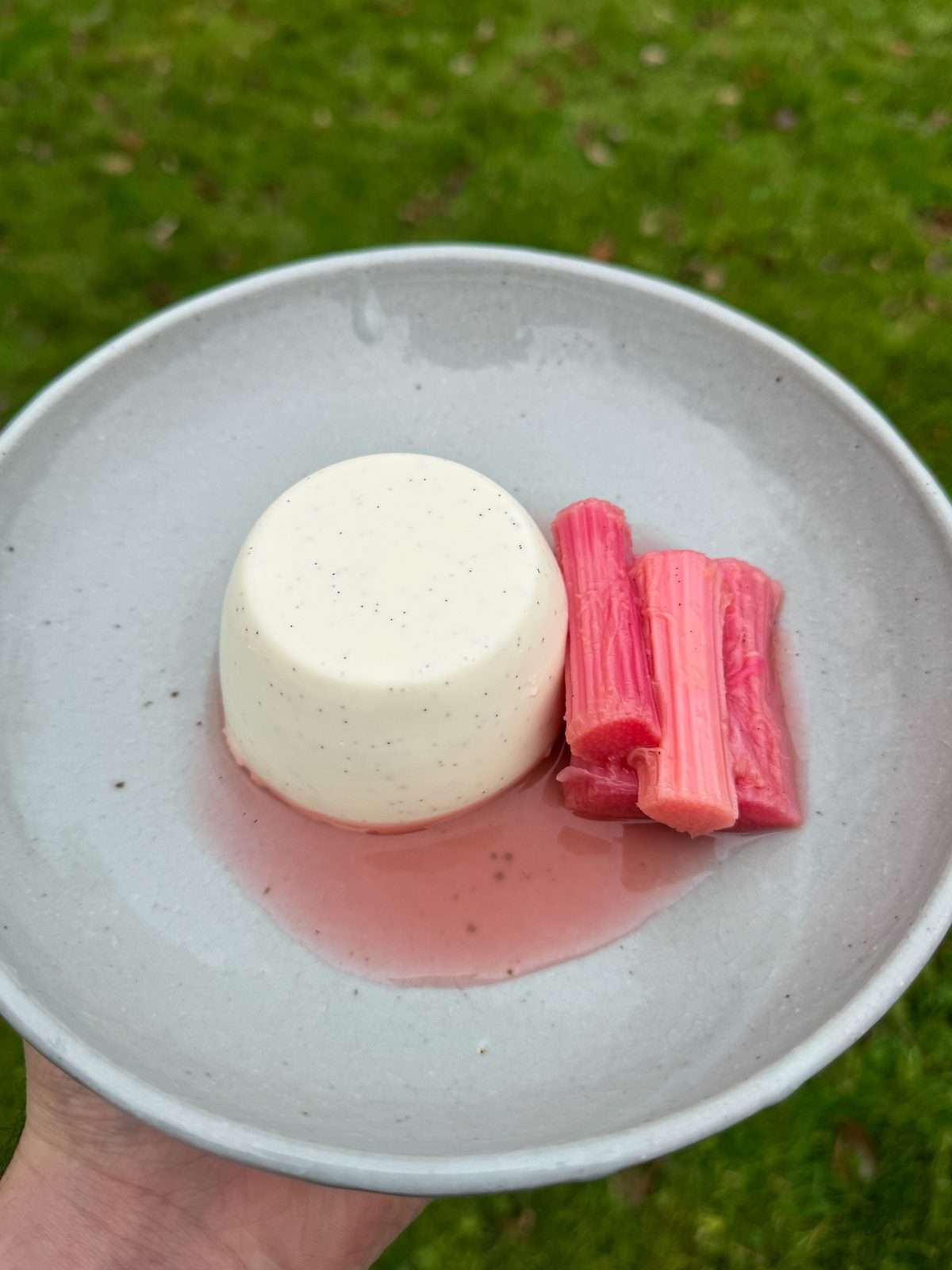
How To Make Greek Yogurt Panna Cottas
The full, printable recipe card for these panna cottas can be found at the bottom of this post! Here’s a quick rundown of the recipe…
- Soak Gelatine
First, we need to add gelatine sheets into a bowl of cold water then let them soak whilst we warm up the cream. It’s best to add the gelatine sheets into the water one at a time so that they soak properly (they’ll stick together otherwise!). - Warm Cream
Next, we add double cream into a saucepan along with whole milk, caster sugar and half a vanilla pod (both the seeds & the scraped out pod). We warm the cream over a low heat until it is steaming hot but not boiling. This will only take a few minutes. - Add In Gelatine & Yogurt
Once our cream is warm, we take it off the heat. Then we squeeze as much water out of the sheets of gelatine as possible & stir into the cream, followed by the Greek yogurt. I find that it’s best to use a spatula to stir in the gelatine & a whisk to mix in the yogurt. Once everything is combined, we pass the panna cotta mix into a metal bowl, through a sieve. - Cool Over Ice
Before pouring the cream into moulds, we cool it over ice to hold the vanilla seeds in suspension, which prevents them from sinking. To do this, we fill a large bowl up with ice & cold water them place the bowl of cream in the water. We leave the cream like this for 15-20 minutes, stirring regularly until the mix is thick (but not fully set!). - Pour Into Moulds & Set
Once the cream is cool & thick, we pour it into 150ml pudding moulds then refrigerate until completely set. This will take at least 4 hours. - Turning Out
To turn out the panna cottas, we need to briefly dunk each mould in a bowl of hot water, making sure not to fully submerge them (we don’t want a wet panna cotta!). We then loosen the panna cotta’s top edge from the mould with our fingers then turn out onto a plate. If the panna cotta is stuck in the mould, dunk the mould back in the water a second time. - To Serve
To serve we spoon some of our poached rhubarb to the side of the panna cotta, along with a generous spoonful of the poaching syrup.
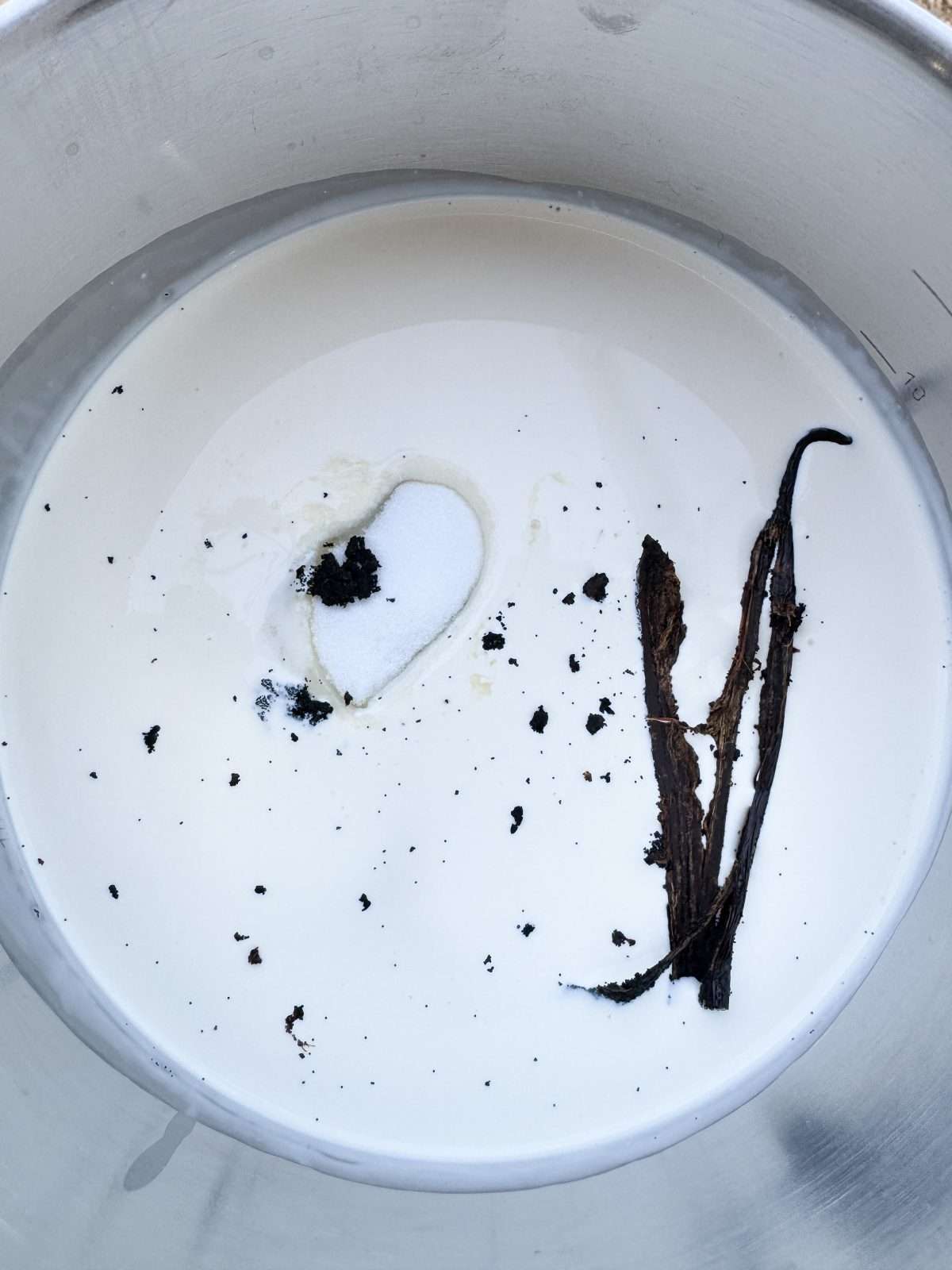
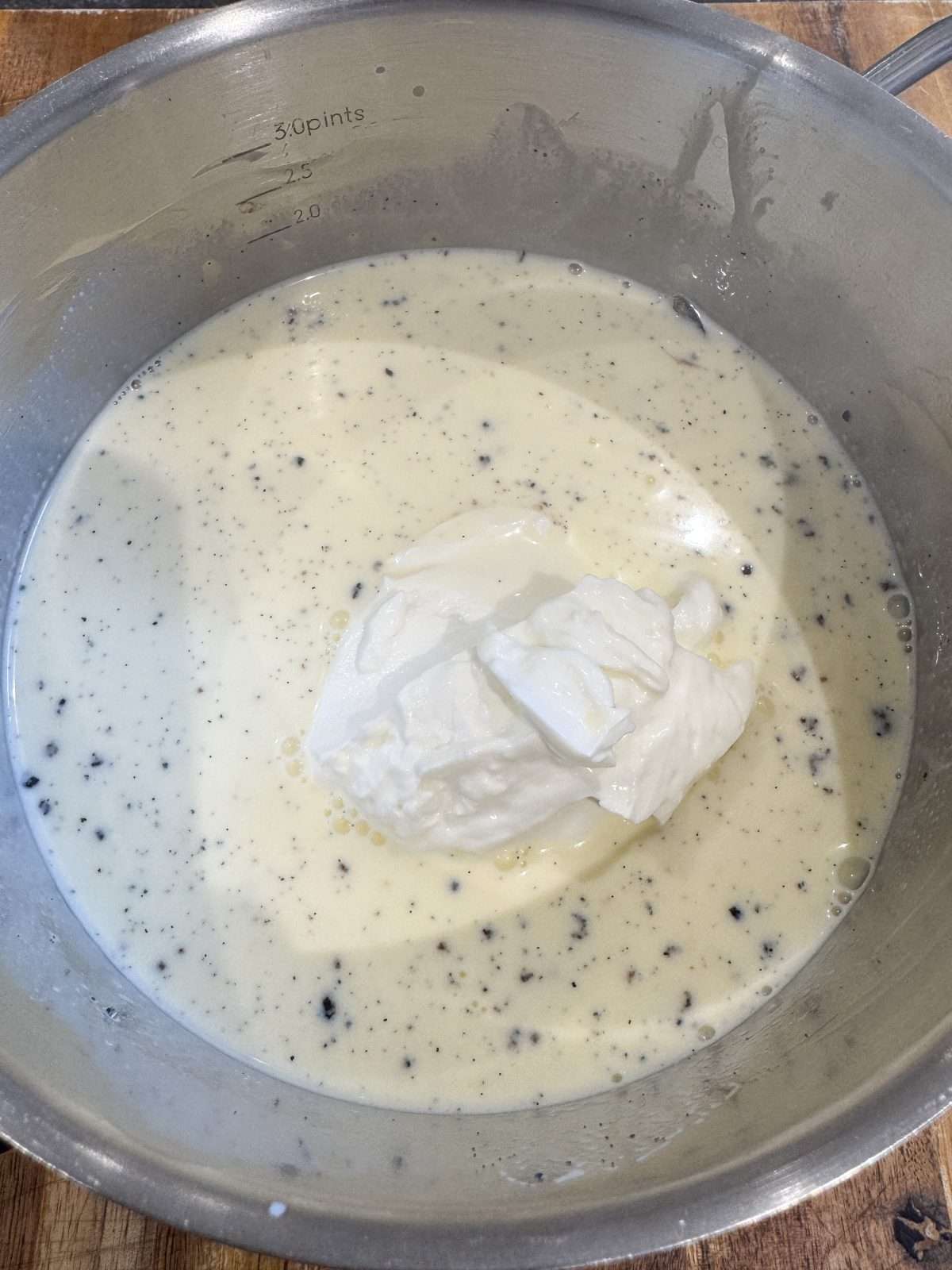
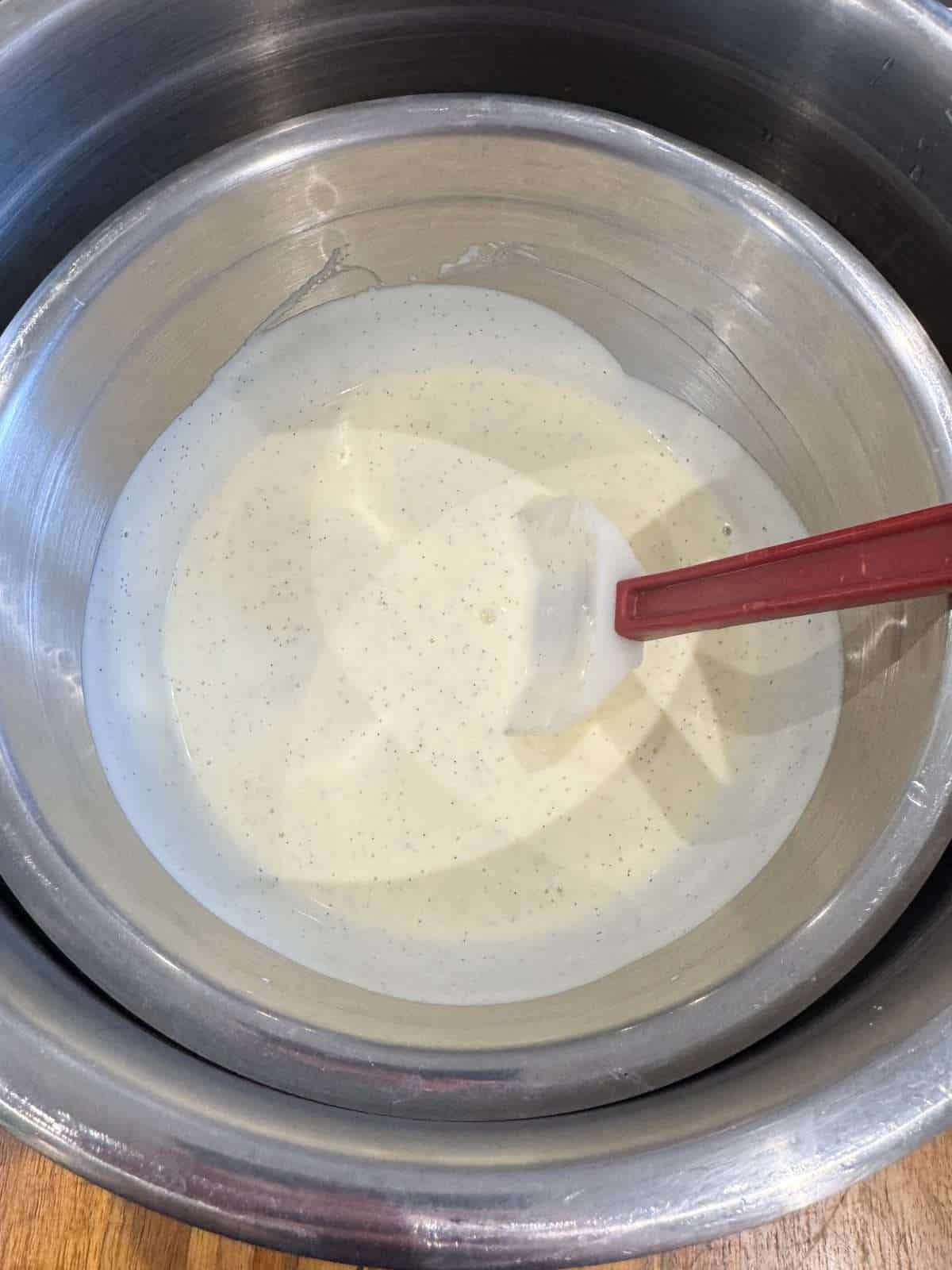
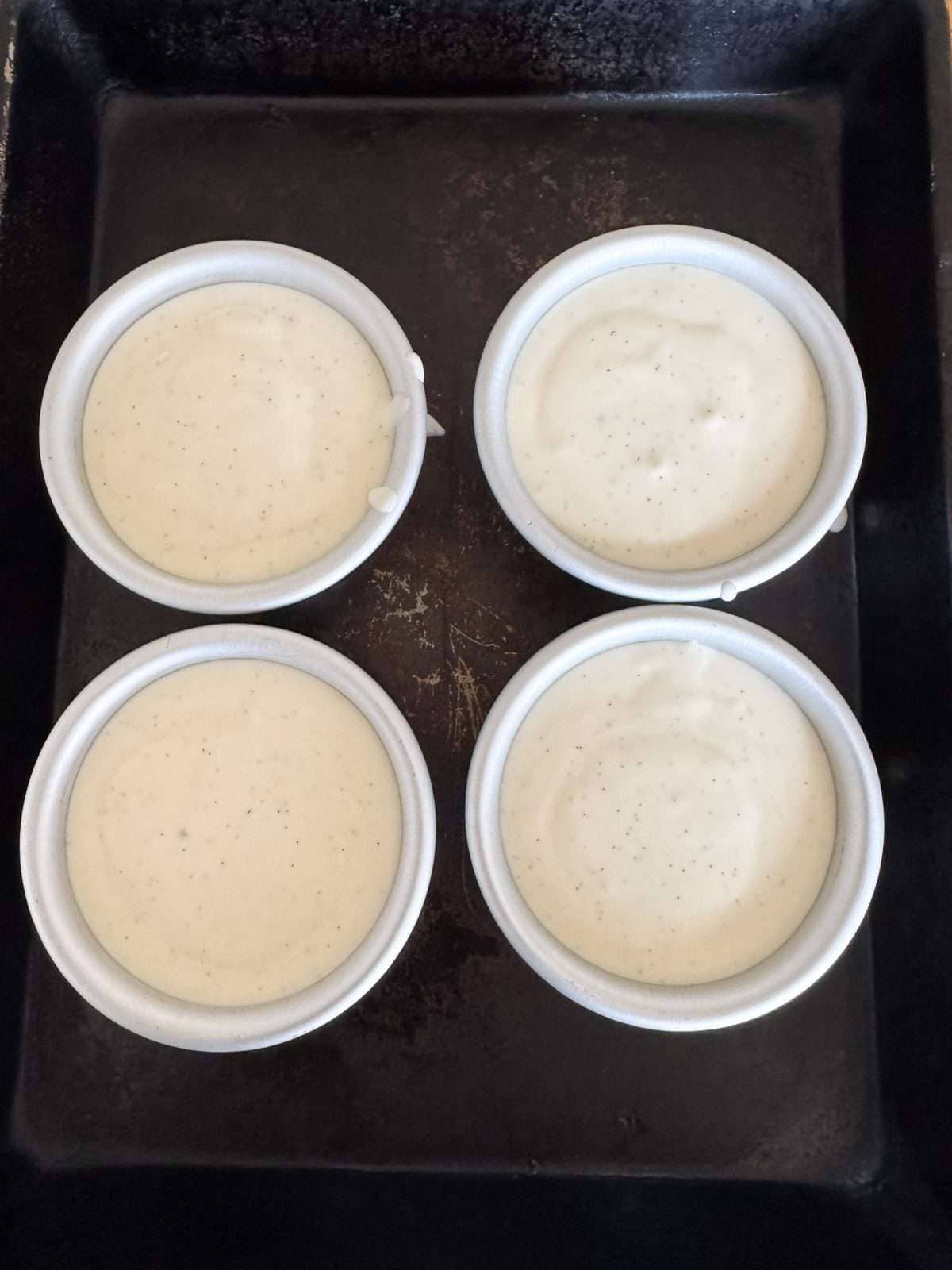
Poached Rhubarb
I served my panna cottas with some gently poached forced rhubarb as it’s currently in season. However, regular rhubarb will work as well or you could use a different seasonal fruit instead.
The key thing when cooking rhubarb is not to overcook it as it will break down & lose its’ shape! The trick to perfectly cooked, poached rhubarb is to cook it over a really low heat & never letting it boil. It’s best to cut the rhubarb into evenly sized pieces then take them out of the poaching liquid when they are just cooked.
How To Poach Rhubarb
- Lightly trim the ends off the rhubarb then cut the stalks into 6 cm long pieces. Set these aside for now.
- To a medium saucepan, add water, caster sugar, orange zest, orange juice, a star anise, half a cinnamon stick & half a vanilla pod (with the seeds scraped out). Set the pan over a low heat & cook until the sugar has dissolved. This will take 3-4 minutes.
- Next, add the rhubarb into the pan & poach gently until tender. This will take around 5 minutes, depending on the thickness of the stalks. The rhubarb should be soft but still hold its’ shape. If some of your rhubarb is thinner than the rest, poach it separately to avoid overcooking.
- Once your rhubarb is cooked, use a slotted spoon to carefully transfer it to a plate then set to one side.
- Next, set the pan over a high heat, bring to the boil then cook the poaching liquid until it has reduced into a syrup. This will take around 5-10 minutes. Once ready, take the syrup off the heat & leave to cool slightly.
- To finish, place the rhubarb into a container then pour over the syrup, through a sieve. Chill in the fridge until needed. I like to chill the rhubarb in the syrup overnight, to enhance the colour.
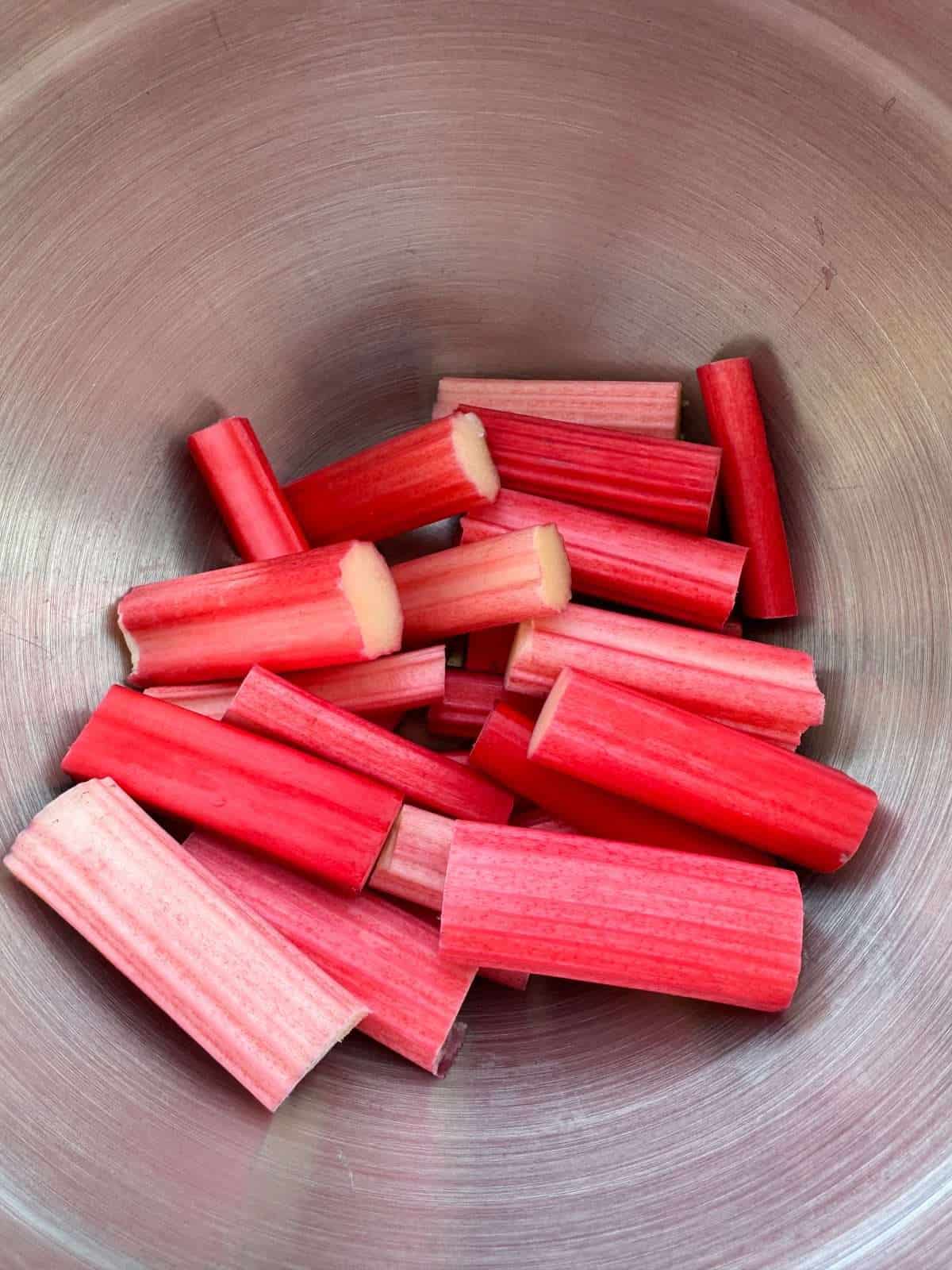
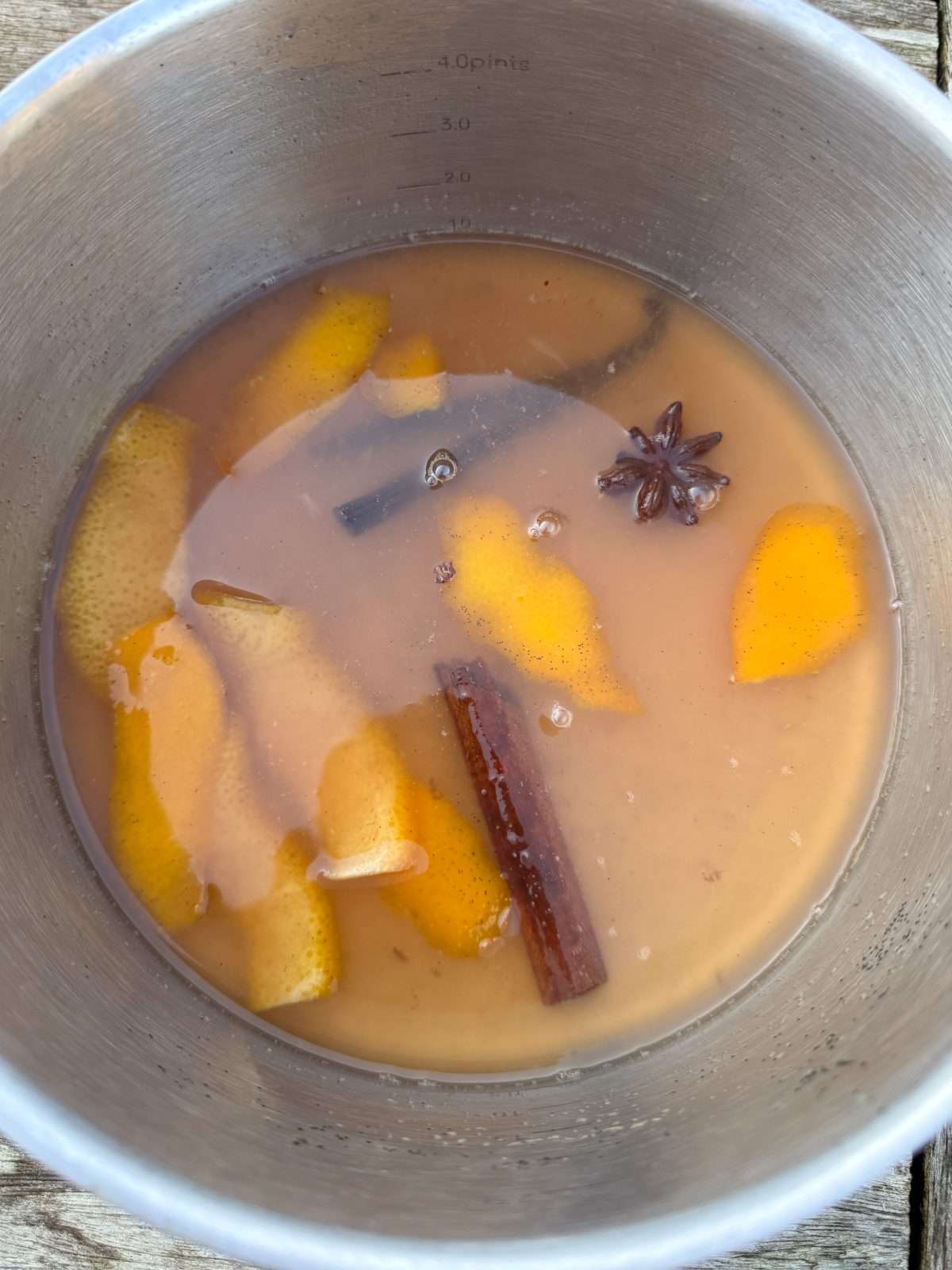
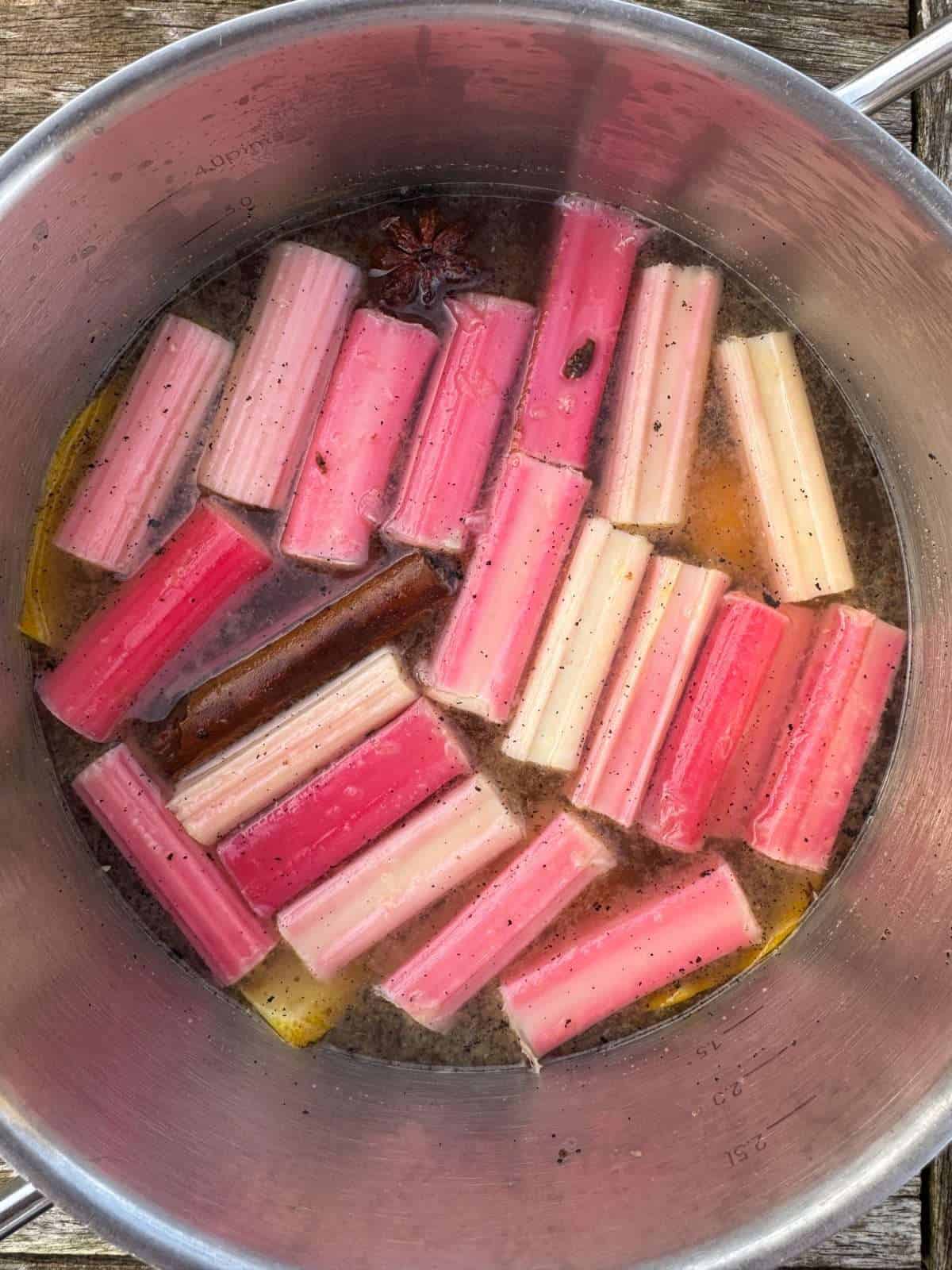
Tips & Tricks
- Use a good quality vanilla pod for the best flavour. We’ll be using vanilla for both the panna cottas & poached rhubarb.
- Instead of using just cream, use some milk as well, for a lighter panna cotta that’s still as creamy but not as heavy.
- Don’t let your cream boil as this can affect how the gelatine sets. It should just be steaming hot.
- To prevent the vanilla seeds from sinking as the panna cotta sets, cool the mix over ice until it has thickened. Then transfer to a jug & pour into moulds. This holds the seeds in suspension, which distributes then evenly throughout the cream.
- Make sure to let the panna cottas sit in the fridge for at least 4 hours before turning them out.
Frequently Asked Questions
Panna cottas need at least 4 hours in the fridge in order to set properly. To be on the safe side, chilling the panna cottas overnight is best. Once set, panna cottas will have a slight wobble.
Forced rhubarb is in season from late December until the end of March.
Replacing gelatine sheets with powder isn’t a direct swap so I would recommend sticking with gelatine sheets.
Milk is used in panna cottas to make them slightly lighter & not as rich and heavy. If you like, you could use just cream for more creamier panna cotta.
The best way to take panna cottas out of their moulds is to quickly dunk each mould into a bowl of warm water then gently loosen the panna cotta’s top edge using your fingers before carefully turning it out onto a plate. Make sure not to fully submerge the pudding mould, as we don’t want to get the panna cottas wet. If the panna cotta doesn’t come out after the first dunk, simply dunk the mould in water again.
Equipment Used
Please note that these are affiliate links & I may make a small commission if you make a purchase using these links, at no extra cost to you. For more information, click here.
More Dessert Recipes To Try!
- Individual Tiramisu
- Lemon & Lime Possets With Ginger Crumble
- Cherry Bakewell Crumble
- Apricot & Almond Frangipane Tart
- Coffee Stracciatella Ice Cream
- Crêpes Suzette
- Brown Butter Hobnob Cheesecake
If you have enjoyed this Greek yogurt panna cotta recipe, it would mean a lot if you could leave a review & rating. And if you’d like to stay up to date with future recipes, follow us on Instagram & TikTok!
Greek Yogurt Panna Cotta With Poached Rhubarb
Equipment
- 4 150ml Pudding Moulds
- Medium Saucepan
- Sieve
- 2 Mixing Bowls (1 Large & 1 Medium)
- Baking Tray
Ingredients
Greek Yogurt Panna Cottas
- 300 g Double Cream
- 150 g Whole Milk
- 75 g Caster Sugar
- ½ Vanilla Pod
- 3 Gelatine Leaves
- 150 g Greek Yogurt
Poached Rhubarb
- 400 g Forced Rhubarb (See Notes)
- 650 g Water
- 150 g Caster Sugar
- 1 Large Orange
- 1 Star Anise
- ½ Cinnamon Stick
- ½ Vanilla Pod
Instructions
Greek Yogurt Panna Cottas
- First, place the gelatine into a container of cold water & leave to soak.Adding the sheets of gelatine into the water one at a time helps them soak better.
- Next, place the cream, milk & sugar into a saucepan. Scrape the seeds out of the vanilla pod & add both the seeds & pod to the milk & cream.
- Place the pan over a low heat & allow to warm gently, stirring occasionally. Once steaming (don’t let it boil!) remove the pan from the heat.
- Squeeze as much water as you can from the soaked gelatine then add to the cream & stir until dissolved. Add in the Greek yogurt, whisk to combine then pass the mix into a bowl through a sieve.
- Fill a larger, separate bowl up with ice & water then place the bowl containing the cream into the bowl of water. Stir the panna cotta mix regularly until it has cooled down & has started to thicken. This will take around 20 minutes.Allowing the panna cotta mix to cool like this holds the vanilla seeds in suspension, preventing them from sinking.
- Transfer the panna cotta mix to a jug then pour into the moulds. Place in the fridge & leave to set. This will take a minimum of 4 hours.
Poached Rhubarb
- Lightly trim the ends off the rhubarb then cut each stalk into 6 cm long pieces. Set these aside for now.
- Next, add the water & sugar into a medium saucepan. Cut the zest from the orange then add into the pan along with 75 grams of the juice, the star anise & cinnamon stick. Scrape the seeds out of the vanilla pod & add both the pod & seeds into the pan as well.Trim as much of the white pith from the zest as possible as this tastes bitter.
- Set the pan over a low heat & cook, stirring regularly until the sugar has dissolved. This will take 3-4 minutes.
- Next, add the rhubarb into the pan then poach gently, until just tender. The rhubarb should be soft but still hold its' shape.The rhubarb will only take around 5 minutes to cook, depending on the thickness of the stalks. If some of your rhubarb is thinner, poach it separately to avoid over cooking.
- Once your rhubarb is cooked, carefully transfer it to a plate & set to one side.
- Next, set the pan over a high heat, bring to the boil then cook the poaching liquid until it has reduced into a syrup. This will take around 5-10 minutes. Once ready, take the syrup off the heat & leave to cool slightly.
- Once cool, add the rhubarb into a container then pour the syrup over, through a sieve. Chill in the fridge until needed.
Plating Up
- Fill a medium sized bowl up with hot water.
- Dunk a mould into the hot water then take it straight out.Don’t fully submerge the pudding mould, we don’t want to get the panna cotta wet.
- Gently loosen the panna cotta’s top edge using your fingers then carefully turn out onto a plate/into a bowl. Repeat with the remaining panna cottas.If the panna cotta won’t come out, dunk the mould into the water a second time.
- Spoon over a generous amount of the rhubarb & syrup then serve.

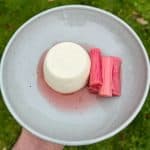

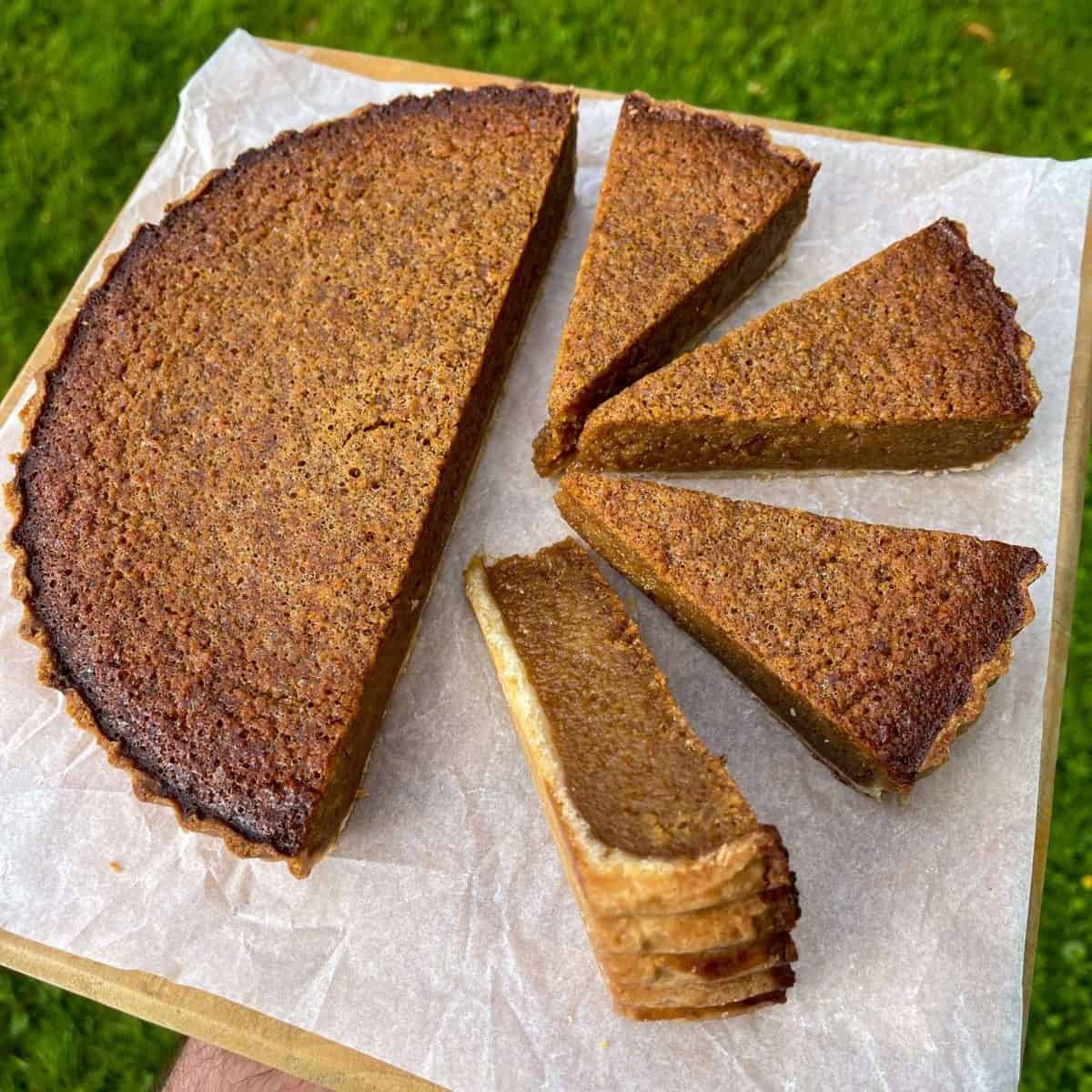
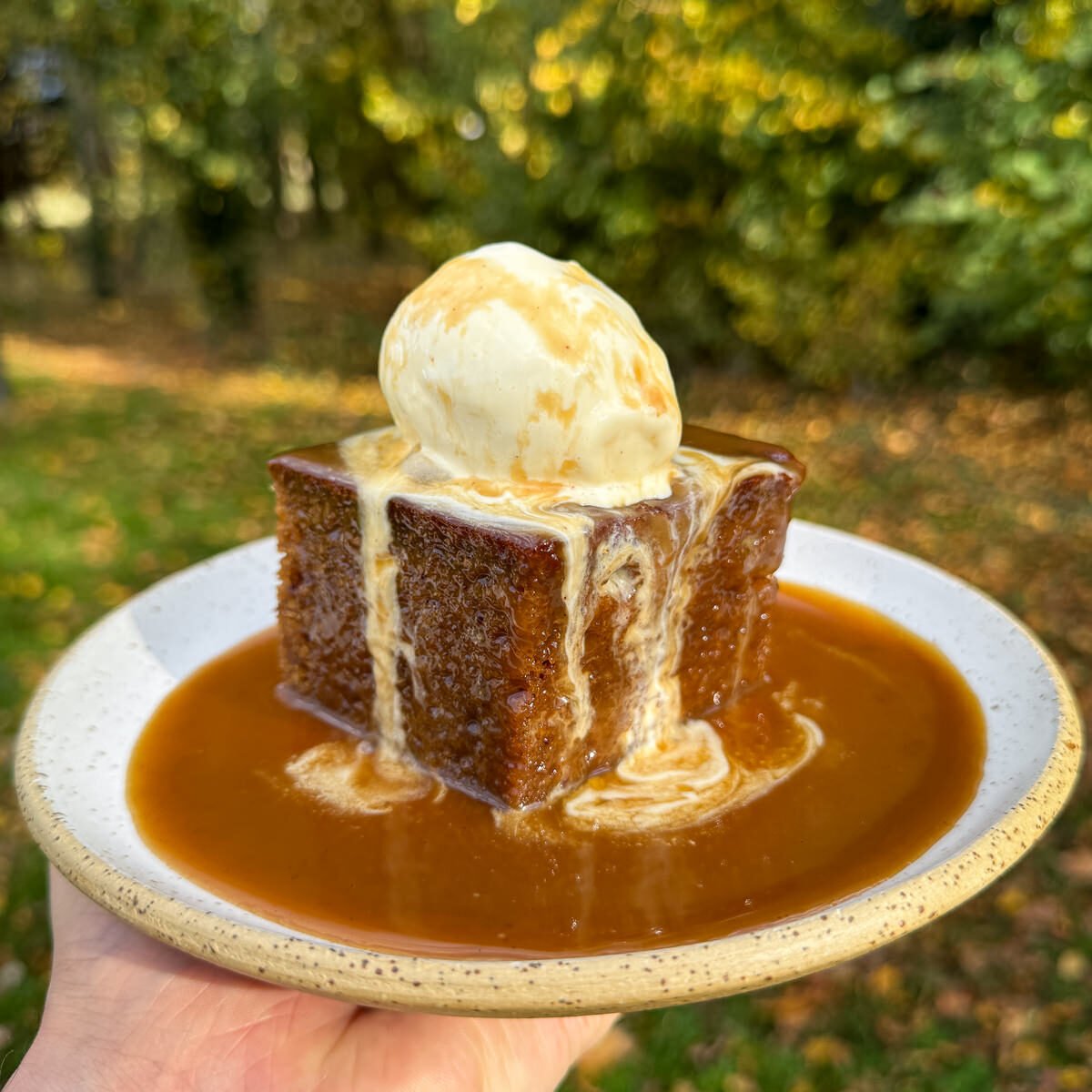
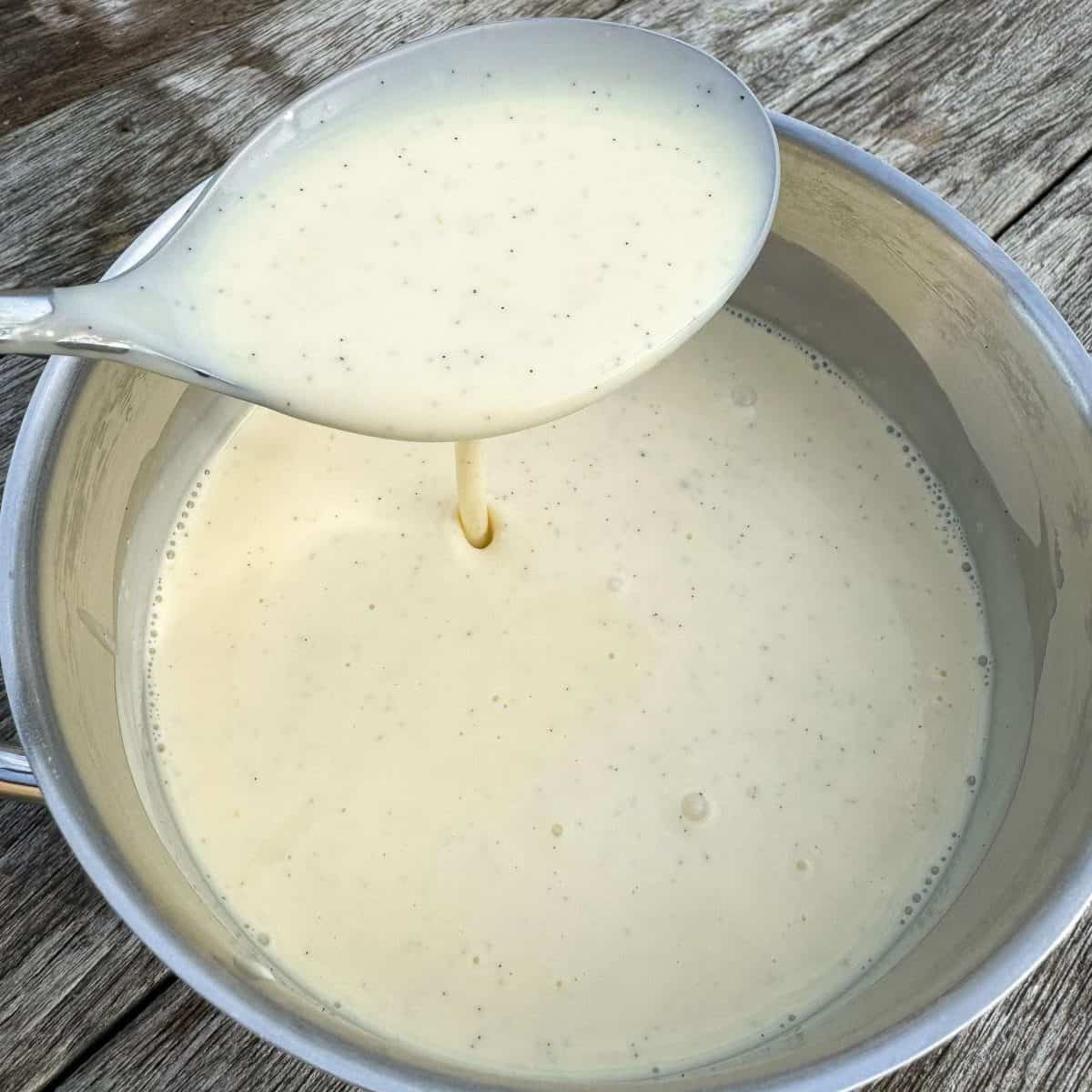
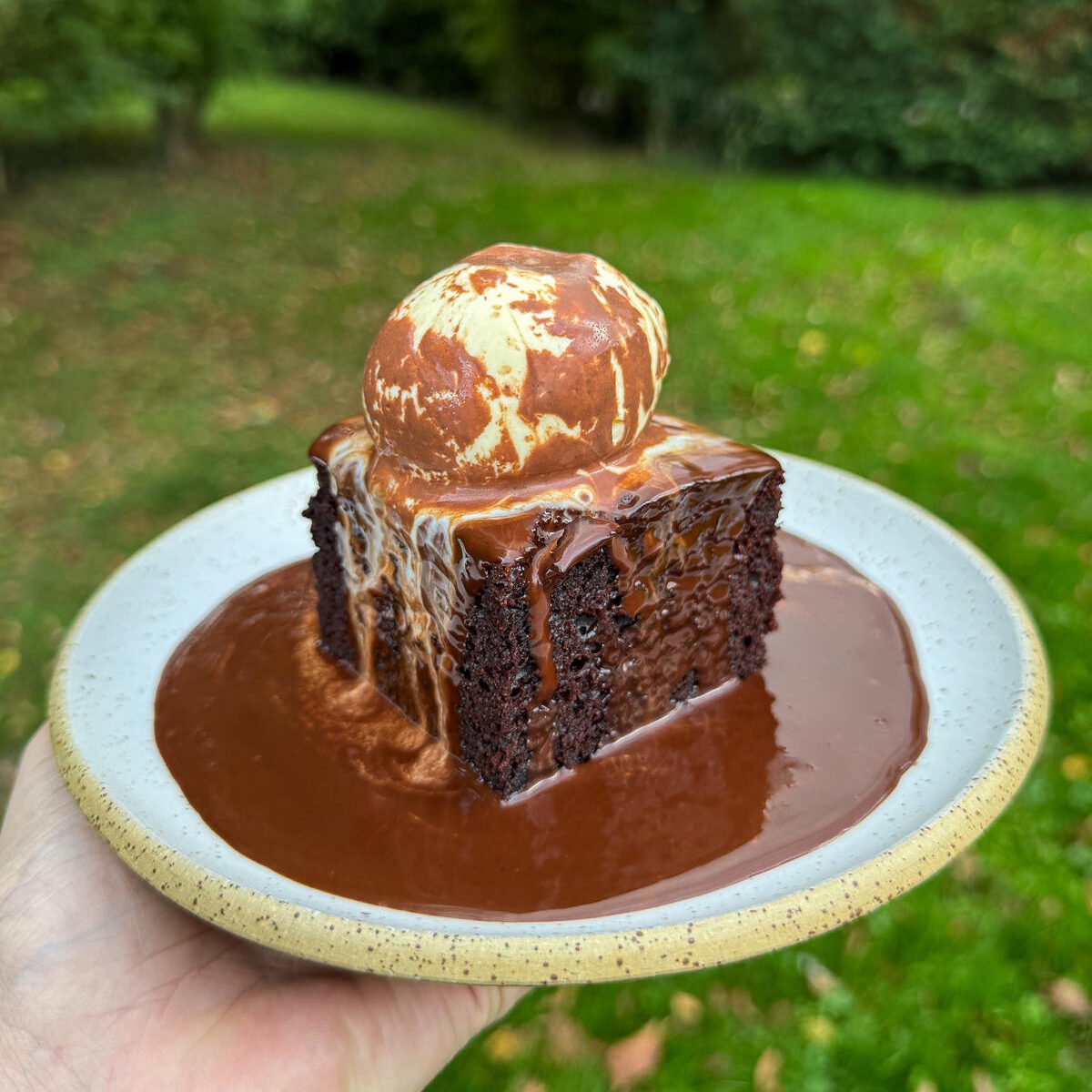
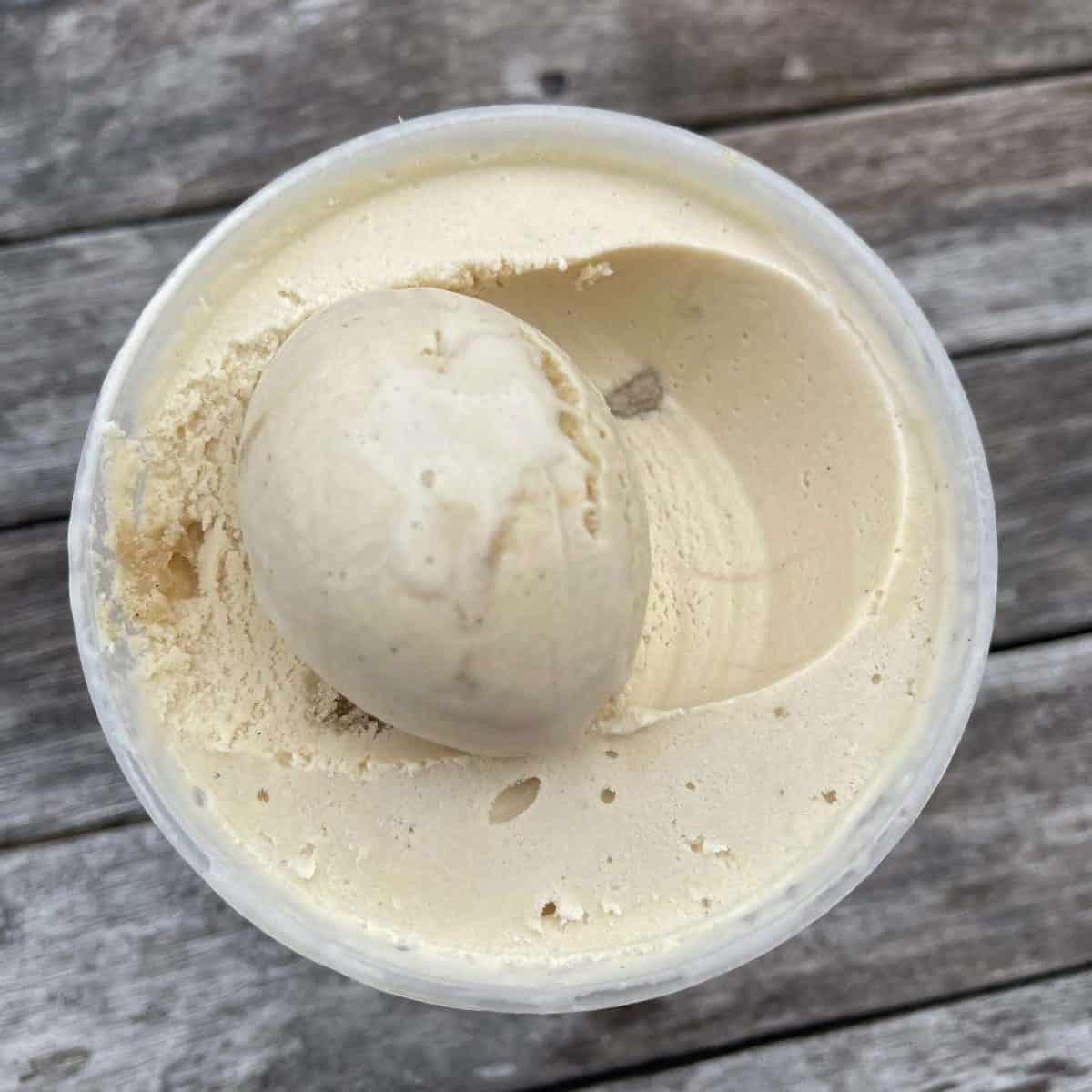
You are food genius